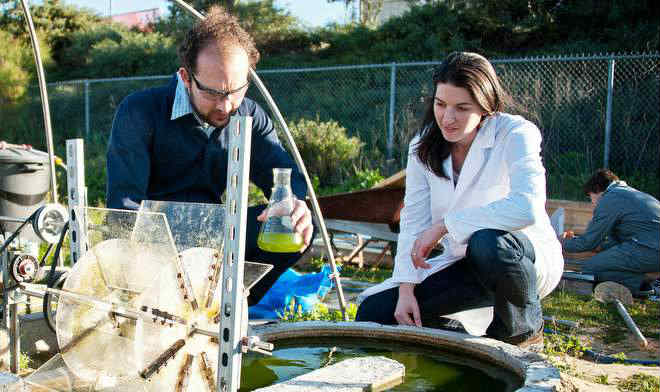Fertilizers can be expensive agricultural inputs for small-scale farmers, but there are technologies being developed which can offer farmers less expensive ways to ensure their soils are fertile and healthy.
Cyanobacteria, or blue-green algae, is one such example of a bio-fertilizer, a type of organic fertilizer which contains living organisms and harnesses naturally occurring inputs like solar energy, nitrogen, and water to ensure soil fertility and plant growth. Small-scale farmers using bio-fertilizers have the potential to provide larger and more sustainable yields and healthier soils for themselves and their communities.
Currently, lack of soil fertility is the primary cause of declining per-capita food production in sub-Saharan Africa. Bio-fertilizers can help to maintain the natural soil habitat, while also improving fertility. More specifically, cyanobacteria fix nitrogen, which is an essential nutrient for supporting plant growth. The cyanobacteria tap the sun’s energy captured during photosynthesis to fix nitrogen from the air and turn it into a form which plants can use. The cyanobacterial fertilizer production begins with cultures which are seeded in shallow ponds and are ready to use a few weeks later. According to researchers at the Centre for Conservation and Utilization of Blue Green Algae at the Indian Agricultural Research Institute, cyanobacteria can be useful for agricultural development because they “offer an economically attractive and ecologically sound alternative to chemical fertilizers for realizing the ultimate goal of increased productivity…”
Thin Air Nitrogen Solutions, a company producing and marketing bio-fertilizers to small-scale farmers in the developing world, found that when cyanobacterial bio-fertilizer was applied to a variety of crops in Ethiopia, “yields are at par or exceeded outcomes from urea application and double those with zero fertilizer use.” In addition, they found that plants which received these bio-fertilizer treatments had improved nutritional values; zinc and beta-carotene levels were more than doubled and iron increased by more than 50 percent compared to crops treated with nitrogen-rich urea chemical fertilizers.
There is the ongoing challenge of figuring out how this type of technology can be produced cheaply enough at the local-village scale while still being an effective chemical fertilizer alternative. In order to ensure that test samples of cyanobacteria are adapted to local soil conditions, test ponds placed at village sites are being seeded with cyanobacteria which are naturally occurring in local soils. The goal is for farmers to be able to produce their bio-fertilizers on-site to use on their own fields and potentially sell on the local market. By meeting these criteria, agricultural developers can help to ensure that cyanobacterial bio-fertilizers enable sustainable food production throughout the world.













